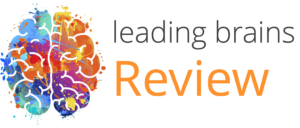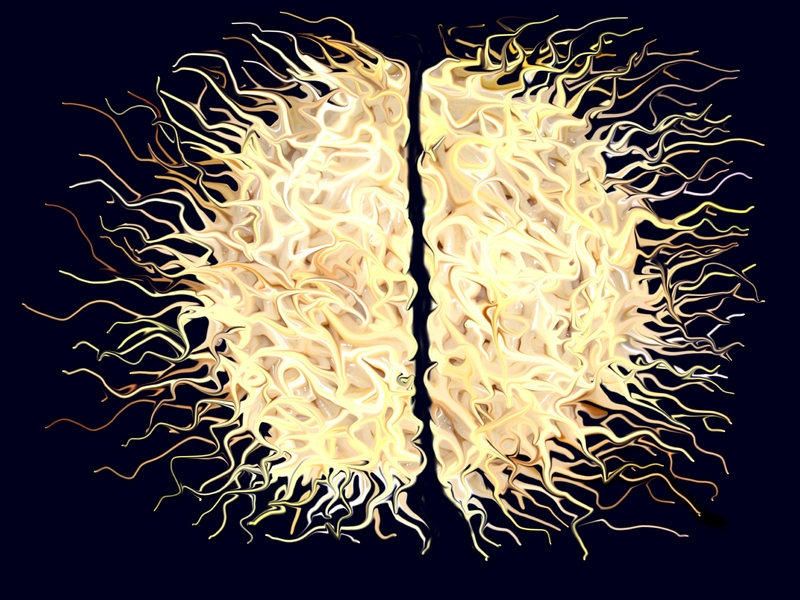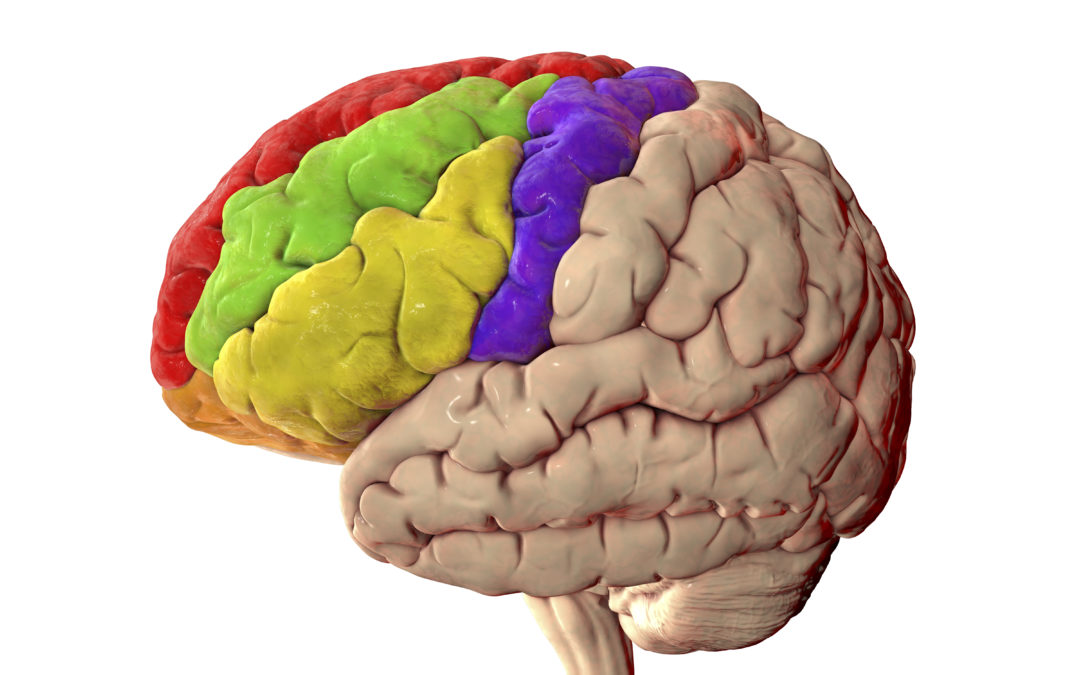
The Prefrontal Cortex
The part of the brain that is considered particularly human
The frontal cortex gets a lot of press being known as the executive centre and though it is a large and complex area, I believe a short review is necessary to clarify what it does do.
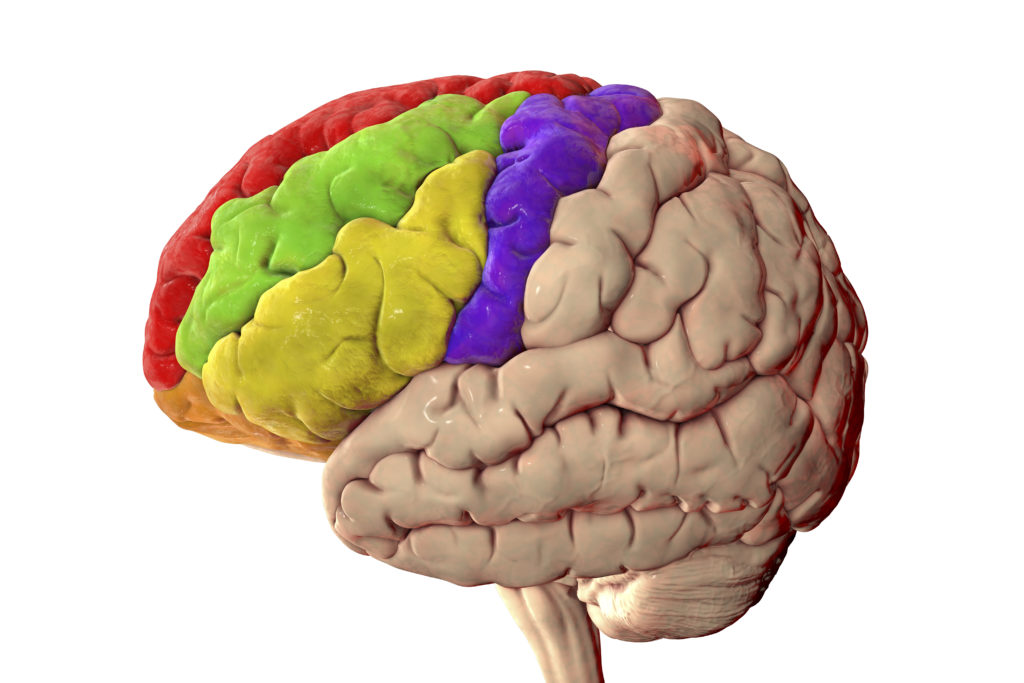
The frontal or prefrontal cortex gets a lot of publicity, and quite rightly so. It is considered our “executive centre”, the part of the brain that does all that high-level stuff that makes us very human. It is also the part of the brain that is vastly different to chimpanzees and one that we can see has developed over the human lineage.
I have already reviewed certain parts that are, or can be considered, a part of the prefrontal cortex in previous issues, namely the orbitofrontal cortex in lbR-2021-03 and also the anterior cingulate cortex in lbR-2021-04, but also in lbR-2021-06 when I looked at the social brain. But this issue I would like to take a step back and give you a brief overview of the prefrontal which will enable us to look at different regions in more detail in the future.
When we talk of the prefrontal we are, obviously, talking about the frontal lobe of the brain. However, this can be defined in different ways:
They cytoarchitectonic approach defines the prefrontal as the frontal part of the brain that has a granular layer IV. Which may sound like mumbo-jumbo to the non-specialist. The cortex is structured into layers of neurons normally having six layers (I reviewed in lbR-2021-01). However, this is strictly not true with some traditionally classed in the prefrontal not having a granular layer IV.
The projection zone defines the prefrontal cortex as the area that is connected, or has projections from, the mediodorsal nucleus of the thalamus. Though widely accepted more recent and advanced imaging has shown that this is also strictly not true.
The electrically silent area of the prefrontal cortex is another way to define the prefrontal as the area in front of the motor cortex that does not stimulate and observable movements when electrically stimulated. This helps distinguish prefrontal areas from motor areas but electrically silent is the opposite of what is happening in the prefrontal with wide-reaching brain activation on stimulation of the prefrontal (showing its importance).
The above are of passing interest only to us as non-neuroscientists. Of more interest are the specific regions. These are first split into the medial (inside), lateral (outside), and orbital (underside) surfaces.
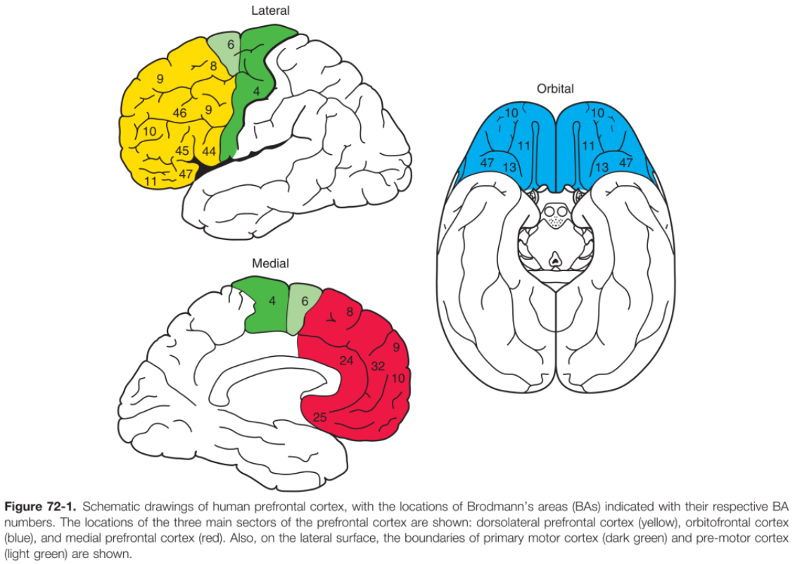
From Holt et al. 2008
The medial surfaces are those that are “in the fold” between the hemispheres. This is often generally referred to as the Medial Prefrontal Cortex (32 above), Ventromedial Prefrontal Cortex (25 above), and the Anterior Cingulate Cortex (24 above) is normally classed separately though sometimes included as part of the medial prefrontal cortex. All of these can be split into smaller regions.
The lateral surfaces are normally split into three larger regions. The Dorsolateral Prefrontal Cortex (9,10, 46 above), the Ventrolateral Prefrontal Cortex (44, 45, 47 above), and the Orbitofrontal Cortex which is actually the bottom of the Prefrontal Cortex.
So, what does the prefrontal cortex do?
“The PFC is a large and complex brain region that is best conceptualized as being located at the highest point of a sensorimotor pyramid, starting with the primary sensory cortices and ending at the primary motor cortex (Figure 71-3). Highly processed information from sensory association areas converges onto the PFC, which then integrates the information with existing priorities, leading to the construction of adaptive behavioral plans based on this input.”
– Holt et al. 2008
We often talk about executive functions, but that term also needs clarifying.
- Top-down processes whereby we are exerting control on bottom-up processes, so, for example, exercising restraint.
-
- Inhibition
- Conscious cognitive effort such as doing calculations
- Overcoming desire to do something else, e.g., moving when you don’t feel like moving
- Attention and memory
-
- Focused attention or attending to stimuli – consciously or automatically
- Memory especially short-term or working memory i.e. keeping something in mind so that you can work with it immediately
- Social processing
-
- Empathy and social models associated with medial prefrontal cortex as reported in lbR-2021-06
- Decision making
-
- Decision making including analysis
- Value based judgements balancing emotion and reason especially in the orbitofrontal cortex as reported in lbR-2021-03
-
- Planning and Strategy
-
- Planning and strategy – or adaptive behavioural plans based in input and value-based projections
- Speech production and language
-
- Various aspects of language processing are related to prefrontal areas related to speech production, language comprehension, and response planning before speaking which include and are related to the above functions such as mediated implicit memory retrieval of verbs or noun recollection. These functions differ in the hemispheres.
However, despite the above pointing to the consolidatory and high-order, and top-down functions it must also be noted that some “lower-order” functions such as sleeping with degradation in the prefrontal associated with lowered sleep quality. So as usual we can see that it is hard to clearly delineate the brain as I continually stress it is an integrated whole.
Another important aspect of the prefrontal is that of the role of dopamine that a review in the next article. As you will see dopamine can be considered an attention and motivational molecule and it is therefore no surprise that the prefrontal is rich in dopamine receptors and the meso-cortic pathway is a major dopamine highway.
More recent research has also shown that other brain areas such as the cerebellum also contributes to cognitive processes – but this is likely in the form of immediate feedforward processes based on building cognitive maps – so specialised habits rather than effortful thought and top-down processing.
So, we can see that the prefrontal cortex is indeed involved in a lot of things that make us very human and differentiate us from other animals. It is not the only region that contributes to this but its certainly seems to be a consolidated point of the brain. Without which I would certainly not have been able to exert the control, planning, inhibition, and attention needed to write this article. And you wouldn’t have been able to keep your attention on this article to get this far●
References
Bang, D., and Fleming, S. M. (2018). Distinct encoding of decision confidence in human medial prefrontal cortex. Proc. Natl. Acad. Sci. U. S. A. 115. doi:10.1073/pnas.1800795115.
Bechara, A. (2000). Characterization of the decision-making deficit of patients with ventromedial prefrontal cortex lesions. Brain 123, 2189–2202. doi:10.1093/brain/123.11.2189.
Bicks, L. K., Koike, H., Akbarian, S., and Morishita, H. (2015). Prefrontal cortex and social cognition in mouse and man. Front. Psychol. 6. doi:10.3389/fpsyg.2015.01805.
Carlén, M. (2017). What constitutes the prefrontal cortex? Science (80-. ). 358. doi:10.1126/science.aan8868.
Dolan, R. J. (2007). The human amygdala and orbital prefrontal cortex in behavioural regulation. Philos. Trans. R. Soc. London – Ser. B Biol. Sci. 362, 787–99. doi:10.1098/rstb.2007.2088.
Donahue, C. J., Glasser, M. F., Preuss, T. M., Rilling, J. K., and Van Essen, D. C. (2018). Quantitative assessment of prefrontal cortex in humans relative to nonhuman primates. Proc. Natl. Acad. Sci. U. S. A. 115. doi:10.1073/pnas.1721653115.
Duverne, S., and Koechlin, E. (2017). Rewards and Cognitive Control in the Human Prefrontal Cortex. Cereb. Cortex 27. doi:10.1093/cercor/bhx210.
Dux, P. E., Tombu, M. N., Harrison, S., Rogers, B. P., Tong, F., and Marois, R. (2009). Training improves multitasking performance by increasing the speed of information processing in human prefrontal cortex. Neuron 63, 127–138.
Holt, D. J., Öngür, D., Wright, C. I., Dickerson, B. C., and Rauch, S. L. (2008). “Neuroanatomical Systems Relevant to Neuropsychiatric Disorders,” in Massachusetts General Hospital Comprehensive Clinical Psychiatry doi:10.1016/b978-0-323-04743-2.50073-1.
Jenkins, A. C., and Mitchell, J. P. (2011). Medial prefrontal cortex subserves diverse forms of self-reflection. Soc. Neurosci. 6, 211–8.
Jeon, H.-A., and Friederici, A. D. (2013). Two principles of organization in the prefrontal cortex are cognitive hierarchy and degree of automaticity. Nat. Commun. 4, 2041. doi:10.1038/ncomms3041.
Kim, H., Shimojo, S., and O’Doherty, J. P. (2011). Overlapping responses for the expectation of juice and money rewards in human ventromedial prefrontal cortex. Cereb. Cortex 21, 769–776.
Lara, A. H., and Wallis, J. D. (2015). The role of prefrontal cortex in working memory: A mini review. Front. Syst. Neurosci. 9. doi:10.3389/fnsys.2015.00173.
Likhtik, E., Pelletier, J. G., Paz, R., and Pare, D. (2005). Prefrontal Control of the Amygdala. 25, 7429–7437. doi:10.1523/JNEUROSCI.2314-05.2005.
Massi, B., Donahue, C. H., and Lee, D. (2018). Volatility Facilitates Value Updating in the Prefrontal Cortex. Neuron 99. doi:10.1016/j.neuron.2018.06.033.
Michel, M., and Morales, J. (2020). Minority reports: Consciousness and the prefrontal cortex. Mind Lang. 35. doi:10.1111/mila.12264.
Ott, T., and Nieder, A. (2019). Dopamine and Cognitive Control in Prefrontal Cortex. Trends Cogn. Sci. 23. doi:10.1016/j.tics.2018.12.006.
Perry, A., Saunders, S. N., Stiso, J., Dewar, C., Lubell, J., Meling, T. R., et al. (2017). Effects of prefrontal cortex damage on emotion understanding: EEG and behavioural evidence. Brain 140. doi:10.1093/brain/awx031.
Petrides, M. (2005). Lateral prefrontal cortex: Architectonic and functional organization. Philos. Trans. R. Soc. B Biol. Sci. 360. doi:10.1098/rstb.2005.1631.
Raine, a, Lencz, T., Bihrle, S., LaCasse, L., and Colletti, P. (2000). Reduced prefrontal gray matter volume and reduced autonomic activity in antisocial personality disorder. Arch. Gen. Psychiatry 57, 119–27; discussion 128-9.
Smaers, J. B., Gómez-Robles, A., Parks, A. N., and Sherwood, C. C. (2017). Exceptional Evolutionary Expansion of Prefrontal Cortex in Great Apes and Humans. Curr. Biol. 27. doi:10.1016/j.cub.2017.01.020.
Starkweather, C. K., Gershman, S. J., and Uchida, N. (2018). The Medial Prefrontal Cortex Shapes Dopamine Reward Prediction Errors under State Uncertainty. Neuron 98. doi:10.1016/j.neuron.2018.03.036.
Wang, J., Kurth-Nelson, Z., Kumaran, D., Tirumala, D., Soyer, H., Leibo, J., et al. (2018). Prefrontal Cortex as a Meta-Reinforcement Learning System. Prefrontal cortex as a meta-reinforcement Learn. Syst. doi:10.1101/295964.
Xu, H., Liu, L., Tian, Y., Wang, J., Li, J., Zheng, J., et al. (2019). A Disinhibitory Microcircuit Mediates Conditioned Social Fear in the Prefrontal Cortex. Neuron 102. doi:10.1016/j.neuron.2019.02.026.


